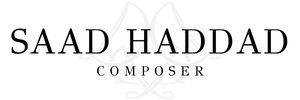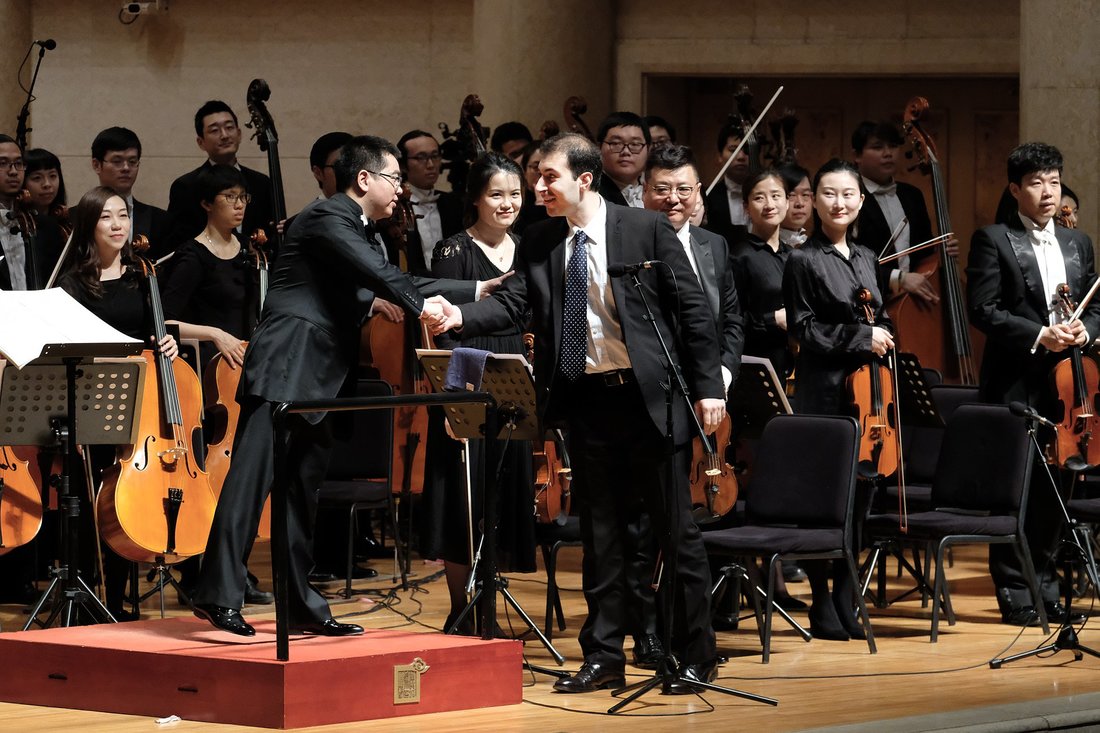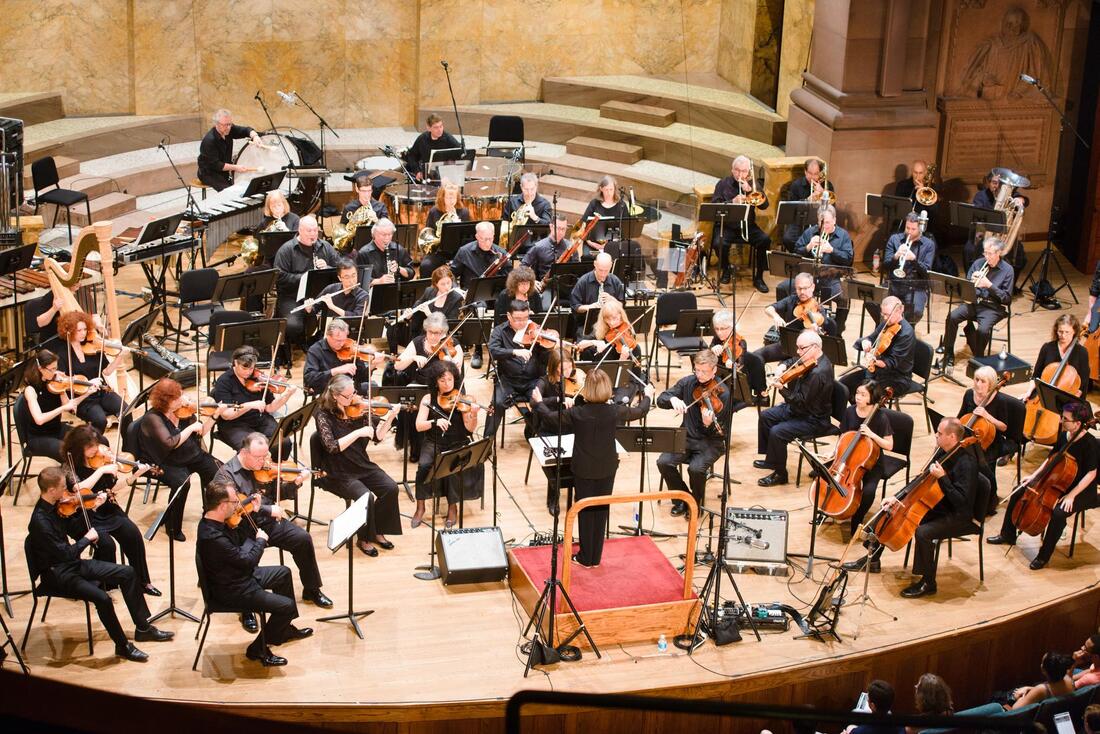Takht (2016) – ca. 14'
3[1.2/afl.3/pic] 2 3[1.2.3/bcl] 3[1.2.cbn] - 4 2 3 1 - tmp+2 - hp, pf - str
Note regarding strings: Suggested number of players: 16.14.12.10.8 or more, though it is possible to play with a smaller configuration (i.e. 12.10.8.6.4). If using a smaller configuration, take care to assign the missing part(s) to the next closest available player(s) in the violins. See "Violin A/B Notation" in the preface page for detailed instructions.
|
New Jersey Symphony conducted by JoAnn Falletta
|
|
Premiere performance
Sioux City Symphony Orchestra conducted by Ryan Haskins at Orpheum Theatre in Sioux City, IA (April 29, 2017)
Sioux City Symphony Orchestra conducted by Ryan Haskins at Orpheum Theatre in Sioux City, IA (April 29, 2017)
Additional performances
UCLA Philharmonia (2022), Hangzhou Philharmonic Orchestra (2018), Minnesota Orchestra (2017), New Jersey Symphony Orchestra (2017)
UCLA Philharmonia (2022), Hangzhou Philharmonic Orchestra (2018), Minnesota Orchestra (2017), New Jersey Symphony Orchestra (2017)
PROGRAM NOTE
Takht (pronounced in one syllable, takht), or ‘ensemble’ in Arabic, describes the typical Middle Eastern musical group that consists of most of the traditional instruments used in Arabic music, including the oud, qanun, kamanjah, ney, riqq, and darbakeh. Originally composed for a chamber orchestra of 15 players (one per part), this work reflects a symphonic expansion of the Western equivalent of that ensemble. Some of the instruments even share similarities between each other; for example, the 'ney' is similar to the flute in construction, while the 'kamanjah' sounds very much like the violin. An ongoing muse in my output thus far is the voice of arguably the most famous Egyptian singer who ever lived, Umm Kulthum (1898–1975), the “Star of the East.” In this particular work, her voice, in a sense, is brought back to life as the woodwinds, brass, and harp instrumentalists literally sing and play into their instruments, transforming the hall into an abstract depiction of Umm Kulthum’s permeating presence in the lives of millions of people that continue to adore her today.
REVIEWS
Saad Haddad [...] achieved a remarkable fusion of idioms in Takht, named for the Arabic word for 'ensemble.' He uses Western relatives of Arabic instruments to create a convincing equivalent of a Middle Eastern ensemble. The most striking effect, intended to evoke the voice of the Egyptian singer Umm Kulthum (1898-1975) and heard at the outset, is the harpist’s haunting vocalization of a drooping semitone through cupped hands into the instrument’s soundboard.
– James R. Oestreich, New York Times
Arabic music is very vocally based, and Takht utilized this characteristic well. From deep within the orchestra, harpist Lynette Wardle began the work with actual singing (screened by the frame of her harp), matched by the flutes, who also vocalized into their instruments. Ms. Wardle controlled much of the changing chromaticism of the piece by sliding a piece of metal up and down the strings of the harp. Other instruments, especially oboist Melanie Feld, added typically Arabic wailing effects. The percussionists played with their hands, rather than sticks or mallets, creating a more natural effect. Throughout the piece, the audience was no doubt always looking to see where the sound was coming from, as Mr. Haddad’s work developed quite a majestic character.
– Town Topics
Saad Haddad’s Takht has Middle Eastern influences which translate into a beautifully unconventional approach to the symphony orchestra.
– Steven Mackey, composer
Courageous experiment of Egyptian music on western instruments...it would be worth performing this work.
– Heinz Holliger, composer
AWARDS
2020 Hear Now Music Festival, Selected Work
2018 ISCM World New Music Days, Selected Work (United States Representative)
2018 Busan MARU International Music Festival Composer Competition, Winner
2018 BMI Student Composer Award, Winner
2017 Minnesota Orchestra Composer Institute, Selected Work
2017 New Jersey Symphony Orchestra Edward T. Cone Composition Institute, Selected Work
2017 Sioux City Symphony Orchestra Composer of the Year, Selected Work
2017 ASCAP Nissim Prize, Special Distinction
|
Maestro Yang Yang and the Hangzhou Philharmonic with Saad Haddad at the Asian premiere of Takht.
|
Maestra JoAnn Falletta and the New Jersey Symphony perform Takht.
|


